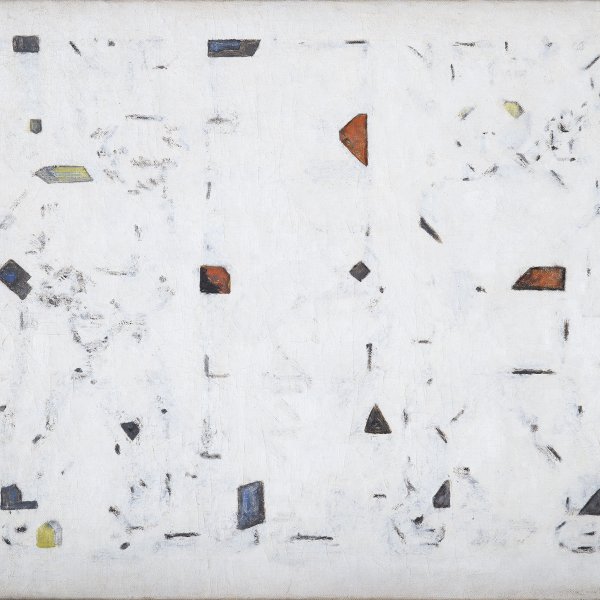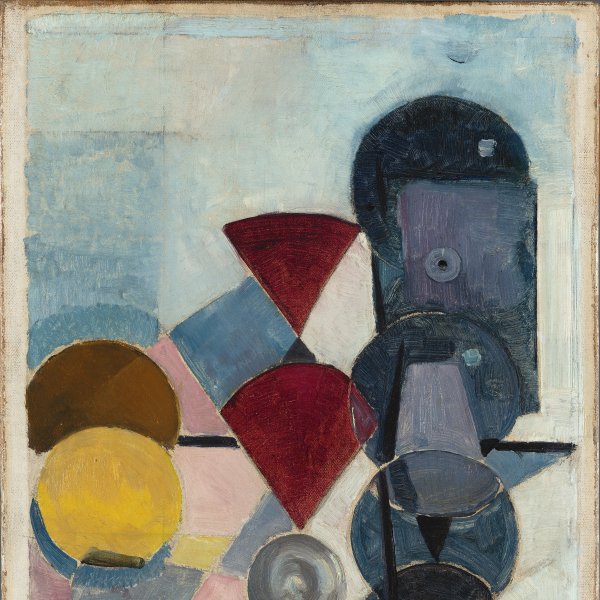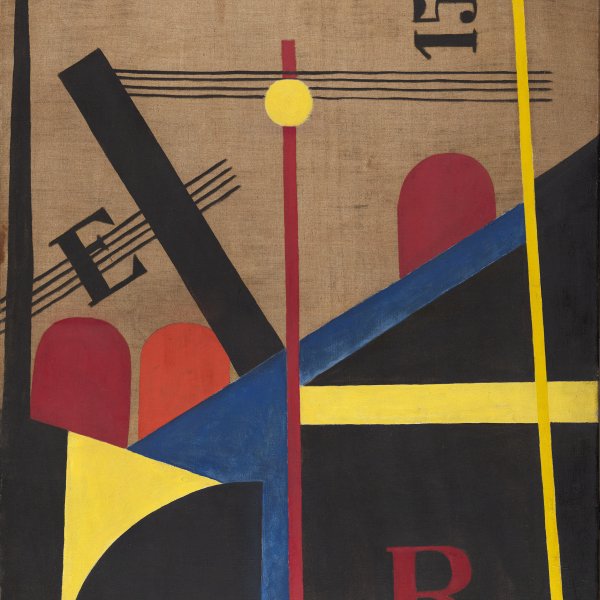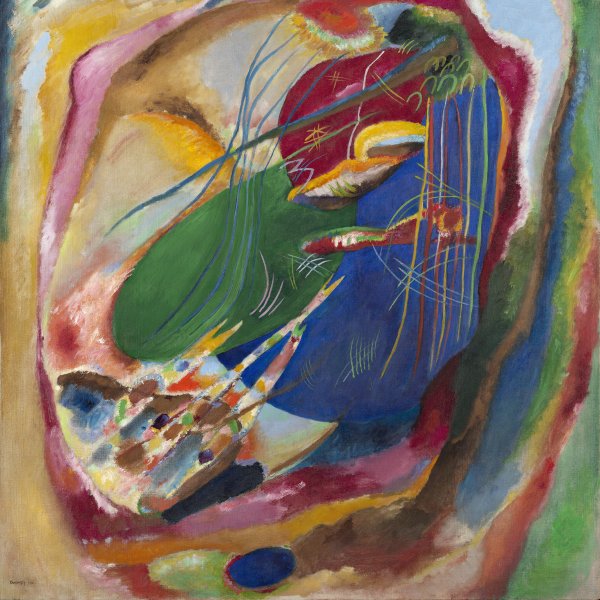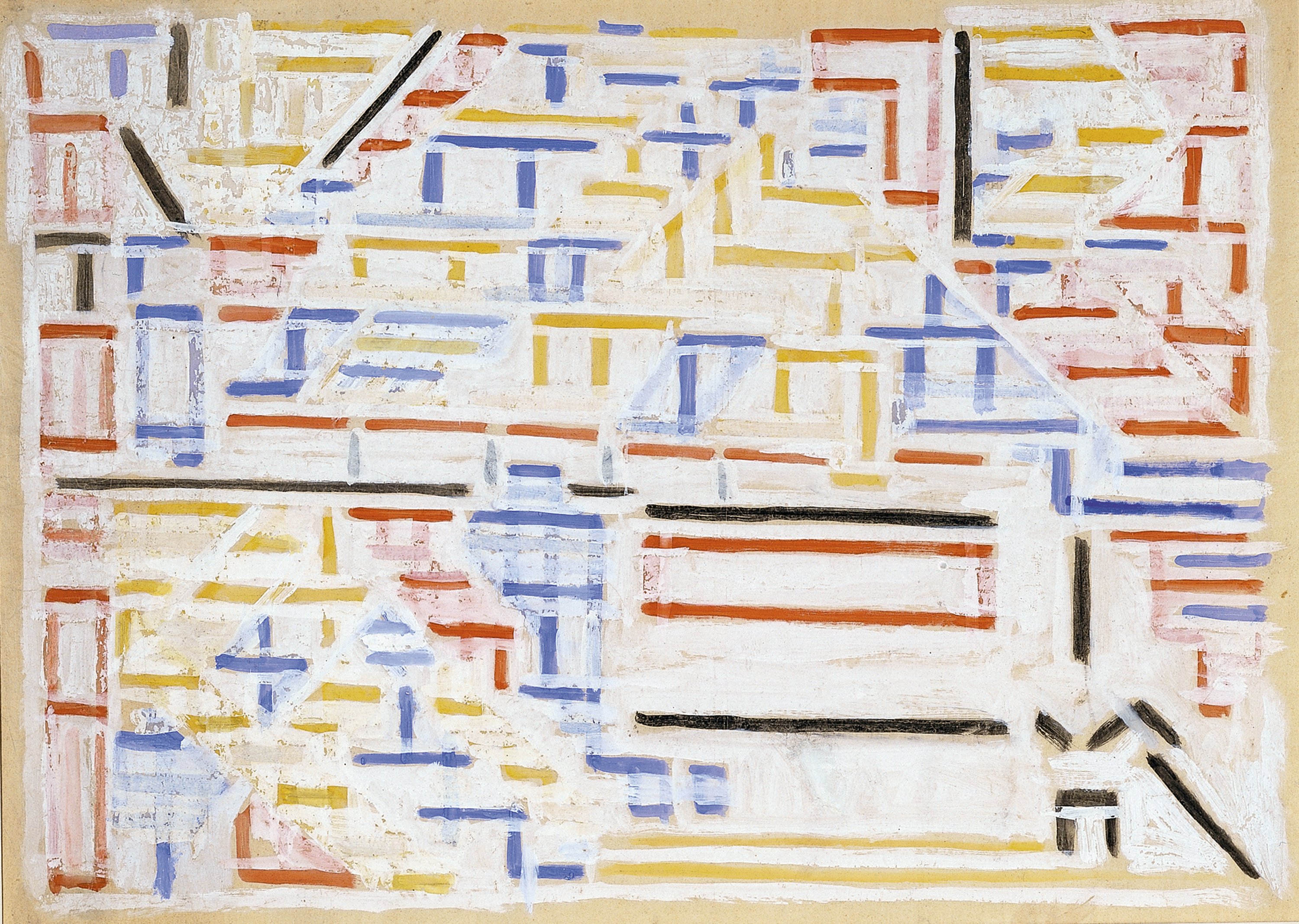Study for Compositions No. 7 and No. 8
1917
Gouache on Tracing paper.
100 x 154 cm
Museo Nacional Thyssen-Bornemisza, Madrid
Inv. no.
641
(1979.81
)
Room 43
Level 1
Permanent Collection
Bart van der Leck met Piet Mondrian in 1916. A year later he became one of the founders of De Stijl and for a time adopted its abstract language based on a Utopian spiritualism, though he never abandoned his basic principle of painting as representation. Not long earlier, in 1914, he had been commissioned by Helene Kröller-Müller to design the colour schemes for the branches of her husband’s firm Wm H.
Müller & Co. and the stained-glass windows for the main building, which would have far-reaching repercussions on his later work.
Leck based the present large-scale study for Composition No. 7 and Composition No. 8, executed in 1917, on a landscape sketch made in 1914 during his travels around Spain and Algeria. The artist, who was then very close to Mondrian in style, took as his point of departure a series of rectangles and fragments of coloured lines arranged on a white background. Although the painting is totally abstract in appearance, a more careful examination reveals certain figurative elements such as the triangular forms that seem to hint at mountains. Indeed, the work has sometimes been called Mountains with a Village in Algeria or Mountainous Landscape in Algeria with a Village — titles that leave no room for doubt. It was precisely this tendency towards figuration, which most of the members of De Stijl did not share, that eventually caused him to leave the group and go his own separate way. Indeed, Leck did not sign the group’s first manifesto and wrote one of his own in 1918 entitled The Rider.
Paloma Alarcó
Leck based the present large-scale study for Composition No. 7 and Composition No. 8, executed in 1917, on a landscape sketch made in 1914 during his travels around Spain and Algeria. The artist, who was then very close to Mondrian in style, took as his point of departure a series of rectangles and fragments of coloured lines arranged on a white background. Although the painting is totally abstract in appearance, a more careful examination reveals certain figurative elements such as the triangular forms that seem to hint at mountains. Indeed, the work has sometimes been called Mountains with a Village in Algeria or Mountainous Landscape in Algeria with a Village — titles that leave no room for doubt. It was precisely this tendency towards figuration, which most of the members of De Stijl did not share, that eventually caused him to leave the group and go his own separate way. Indeed, Leck did not sign the group’s first manifesto and wrote one of his own in 1918 entitled The Rider.
Paloma Alarcó





